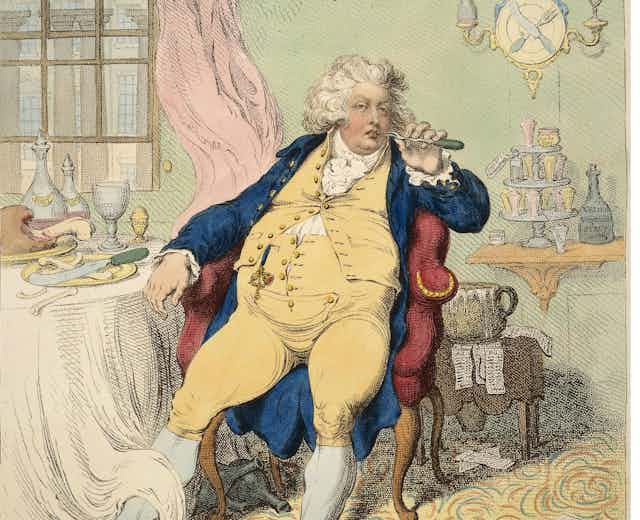Royal bodies are constantly in the news. In January 2024 alone, reports range from the abdication of Queen Margarethe of Denmark for health reasons to the illnesses of the British royal family.
The first announcement, that Princess Kate will take a break from royal duties while she recovers from “abdominal surgery”, was immediately followed by King Charles’ statement about an operation for his enlarged prostate. “Keen to share”, he encouraged others to have a checkup.
Soon after, the announcement that the Duchess of York has melanoma was accompanied by her caution to check our moles.
Current media fascination with the British royal family’s health reflects a long-standing tension between what the public should be entitled to know about the royal body and that person’s right to privacy.
Royal health has been scrutinised for centuries
Historically, royal bodies have attracted public interest, with British newspapers from the 18th century reporting on royal illnesses or commenting on royal diets.
Our research examines the diet of the royal household during the Regency period (circa 1789-1720), when King George III reigned. The diet and bodies of King George III and his son, Prince George revealed the nature of their rule and the fitness of the British nation.
It is difficult to reconcile the mortal bodies of individual rulers with the continuation of the monarchy as an institution and the head of the Church of England. For pre-modern people, the concept of the “king’s two bodies” explained how the divine right to rule simultaneously existed within the spiritual and symbolic institution of monarchy and the individual bodies of rulers.
The growing division between a nation’s sovereignty and the king as an individual in the 18th century raised questions about when a monarch might be unfit to rule. In some ways, the king’s body belonged to the nation.
Parliament, for example, closely monitored George III’s daily life. The royal household was required to report its accounts – including the foods eaten daily – to the counting house of the king’s household, the Board of the Green Cloth.
George III’s well-known mental illness, moreover, nearly caused a political crisis in 1788. Although newspapers updated the public regularly on the king’s health, the reports protected the king’s privacy by giving few details, while easing fears about his fitness to rule.
Royal lifestyle as a reflection of royal morality
George III looked after his body. He felt that there was a family history of obesity, to which he did not want to succumb, so he watched his diet to control his weight.

Because of this, some of his contemporaries saw him as miserly, despite the 20 course dinners served to him daily. His eating habits were well known because his body was always on display, from a picnic at Egham horse races to royal feasts. In 1788, when George III’s health problems began, his body and his appetites became even more interesting to the nation. Doctors moved into Kew, where the king was being kept. They managed his diet, as part of his treatment, and regular bulletins were issued so that the king’s subjects were aware of what was happening to the sovereign’s body.
While George III’s ostentatious abstemiousness led him away from excessive drinking, his son was known to consume vast quantities of alcohol and food. Prince George was an unpopular British royal. His corpulence was used to lampoon him and his perceived lack of self control may partly explain his unpopularity. Fatness in the Regency period was associated with wastefulness.
Eating the right types of foods was important. Bodies were considered to be porous, easily affected by the environment or diet. Moral (or immoral) qualities might enter the body, depending on what was eaten. When satirical cartoonist James Gillray criticised the prince, he used food and body metaphors to make powerful political points.
In one instance, in 1787, he showed the prince, with his parents, gobbling up the wealth of the nation. An image from 1792 sets the prince’s corpulence alongside the unpaid bills that surround him.

Both men were seen to have flawed bodies. The king’s apparent stinginess, expressed through food and drink (as much as his illness) was considered the nation’s problem. Meanwhile, his son consumed conspicuously, eating and drinking with abandon, and plunging into debt through extravagant expenditures.
Who owns the royal body?
The public remains fascinated by royal bodies, despite being unconcerned about fitness to rule or the “king’s two bodies”. Without such frameworks, interest can slip into prurience. If the king is merely a person, then his body should be his own and he is entitled to all privacy.
Although the king and duchess have chosen to publicise their health problems, the princess’ diagnosis remains heavily guarded. Crucially, the messages are tightly controlled. The king and duchess have known about their problems for months, but only recently made them public. They also emphasised the public health benefits of sharing their stories, which simultaneously deflected from private details and the princess’ operation. Just as with George III’s illness, the overarching royal narrative is designed to offer privacy, particularly for Princess Kate.
Unlike the rest of us, the royals cannot be fully private. Indeed, any insistence to the same right to privacy as the rest of us might even undermine the existence of the monarchy as an institution. Royal bodies are allowed to live privileged lives because, ultimately, they belong to their subjects.

